MPC A New Hope Hans Solo Edition
This is the seventh part of the MPC Star Wars A New Hope Hans Solo Millenium Falcon 1/72 Scale MPC953 build and review.
I knew when I chose this subject that the masking stage was going to be very involved, and I’ll admit I wasn’t entirely prepared for this. I’ve had many projects that involved a lot of masking but working on the Stellar Envoy this time was a bit tiring.
That being said, I’ve found it very rewarding as I slowly progress adding each of the stripes to the hull, and that has kept me enthused with the model.
In this part, I’ll go over masking the blue sections, and next time I’ll be able to paint a few of the panels different shades of grey as well as some really nice looking orange-red sections. This week’s work was a huge undertaking, and I wanted to get it done as best I could. And I hope that some of the masking techniques I show in this section will be helpful for you with your future projects.
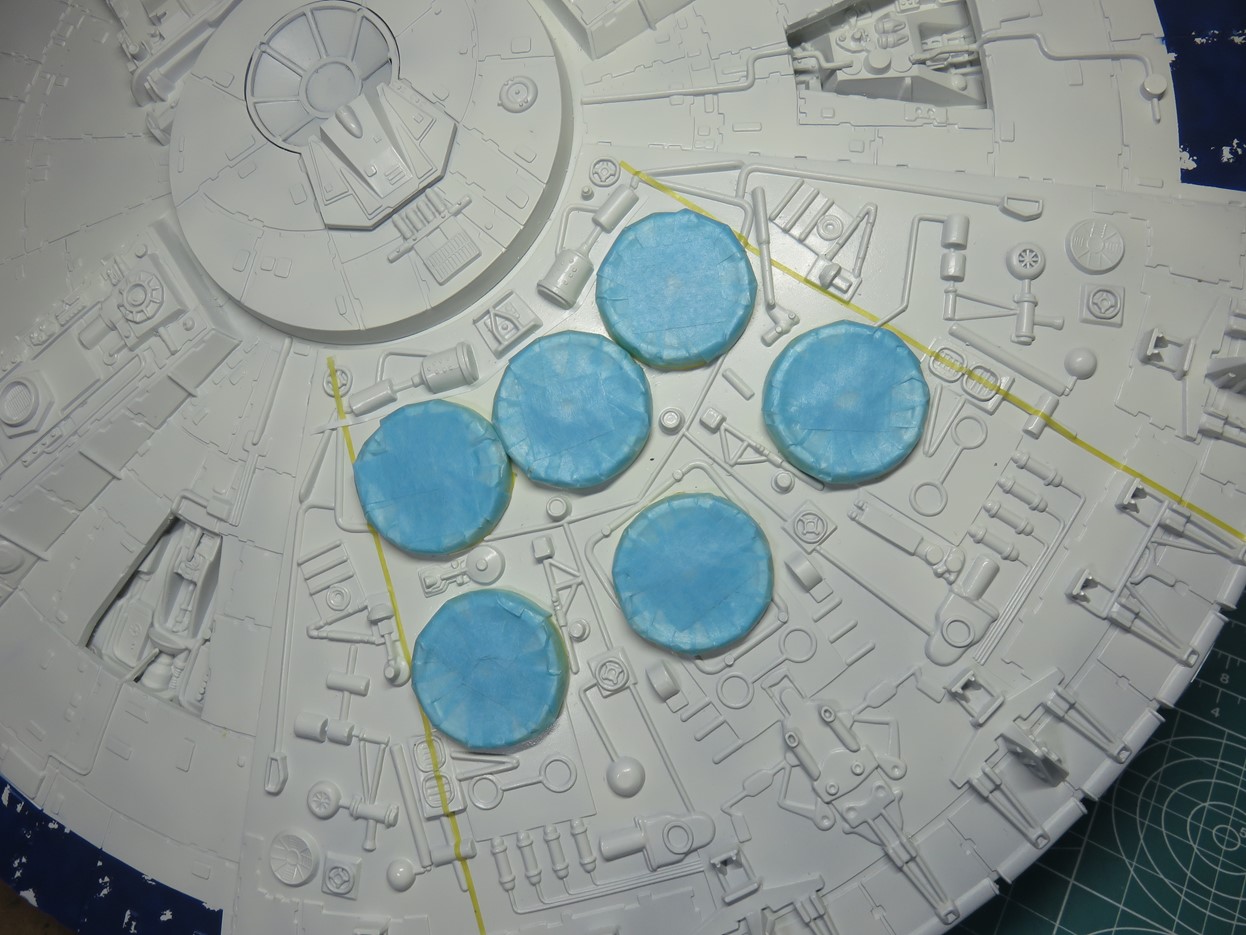
As I mentioned before I’m basing the colors and placement off of Hasbro and F-Toy’s Millennium Falcon as these are technically the only “canon” versions of the Stellar Envoy approved by Lucasfilm. For the back section, I followed F-Toy’s painting guild by masking off most of the back section.
I started by masking off each of the vents as I wanted to keep these insignia white to stand out from the rest of the blue.
Next, I used Tamiya 1.0mm masking tape and I slowly and carefully placed it around the raised details doing my best to keep the edge as straight as possible. This was even more difficult because the parts on the model were uneven and not that symmetrical. It’s not really something that you’ll notice unless you are masking the model. This was an issue that I ran into a few times throughout the build, and it can’t be helped. It’s just a feature of a vintage model kit.
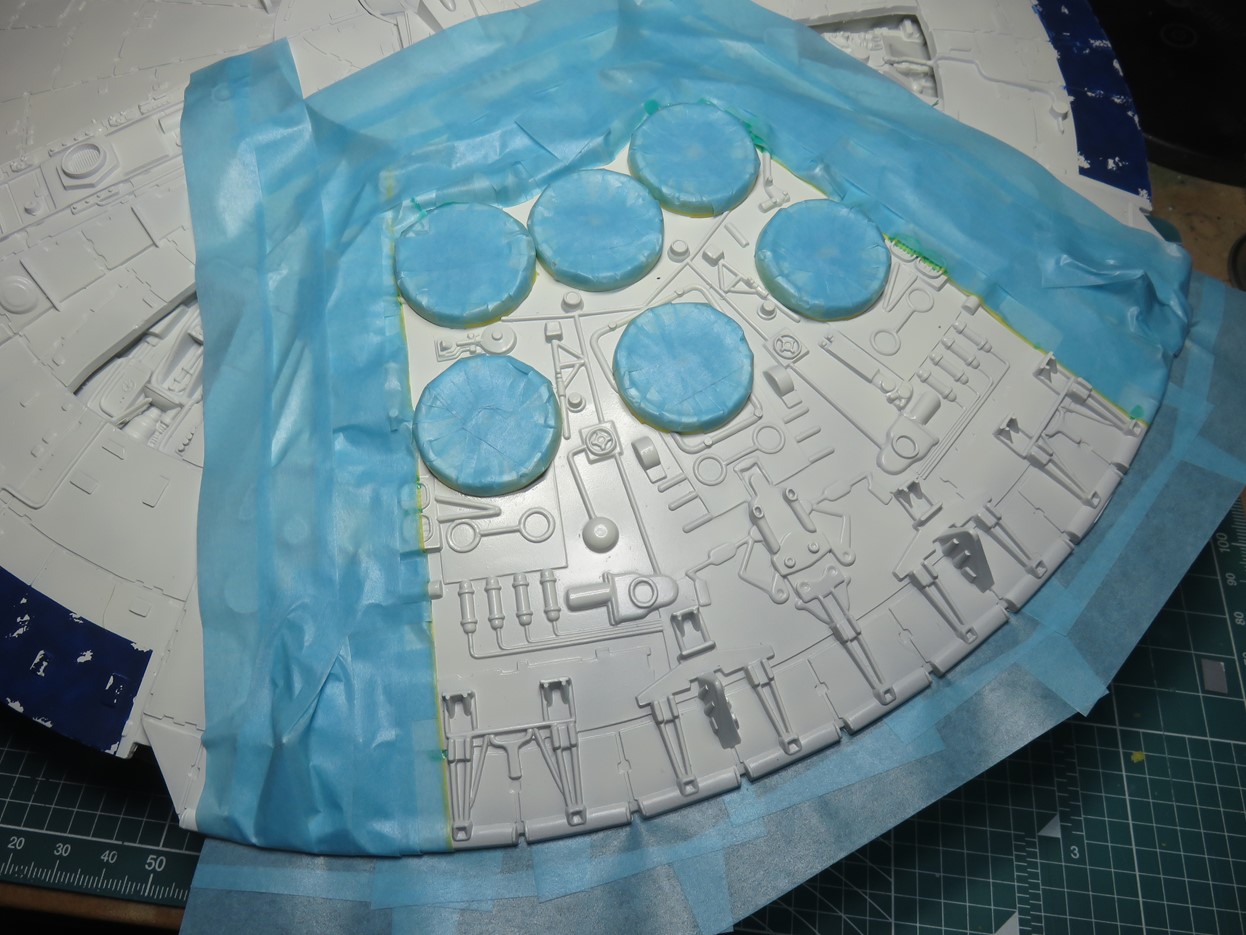
A wise modeler once told me “Tape is cheap, time is expensive”, this meant that it was better to use more tape and not risk bleeding or over-spray rather than be stingy with the tape and have to spend a lot more time cleaning up the excess paint. I do think that this is good advice as I’ve had over-spray happen in the most odd locations with past projects.
Also, for the curve at the front of the vents, I cut a really thin strip of Tamiya Masking Tape for Curves and placed this in front before covering it with more blue modeling tape.
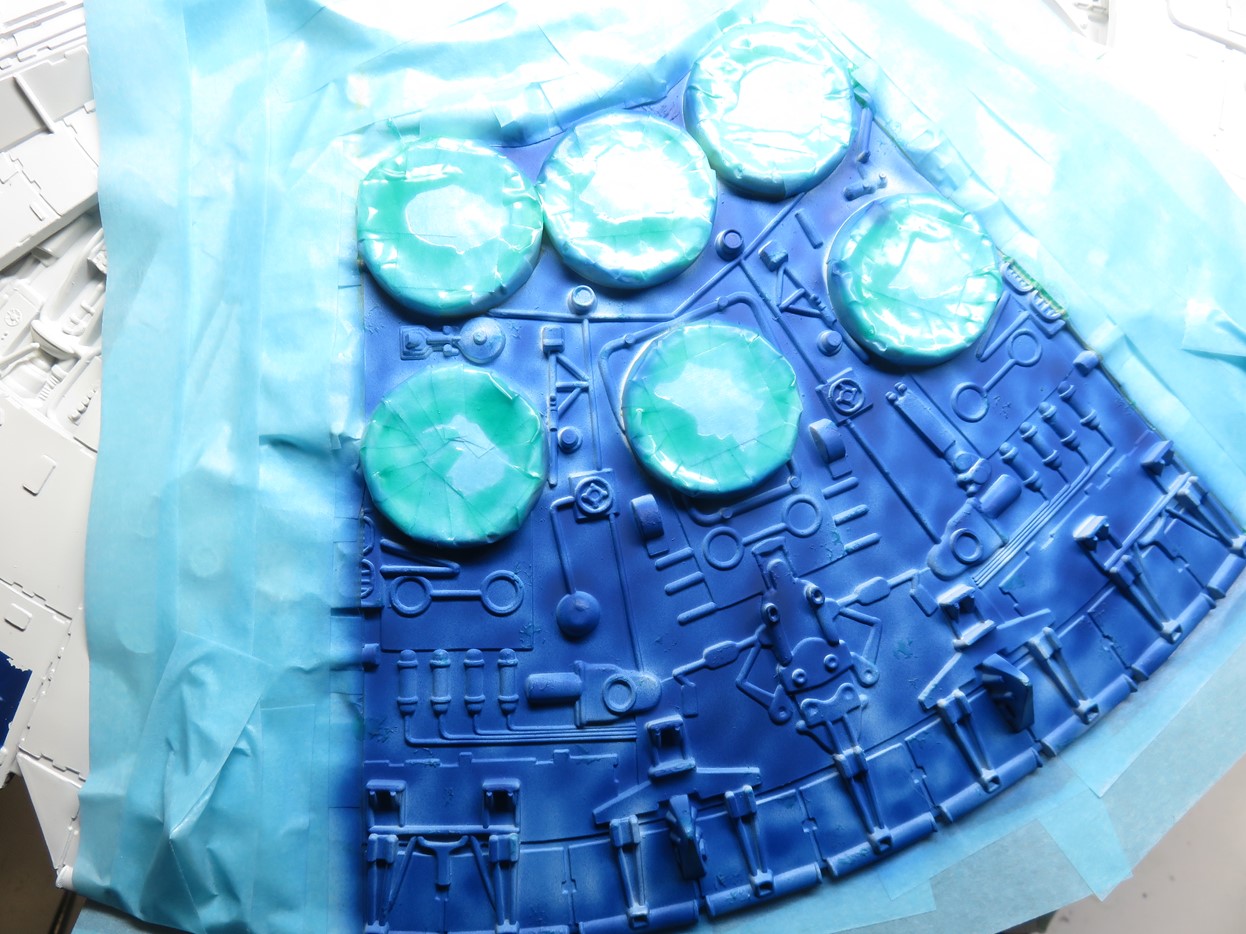
Just as I did in the previous post, I used a sponge to dab on some Mr Masking Sol NEO from Mr. Hobby to create a chipped effect. I then painted Tamiya XF-8 Flat Blue over the panel. I took care to paint along the edge of the tape so that it would create a nice bold line.
I thinned the paint about 60-40 (Thinner to Paint) and I slowly painted it around the model creating this marbled effect just as I had done with the edge sections. This stage took a bit longer to paint as I had to cover all of the raised details.
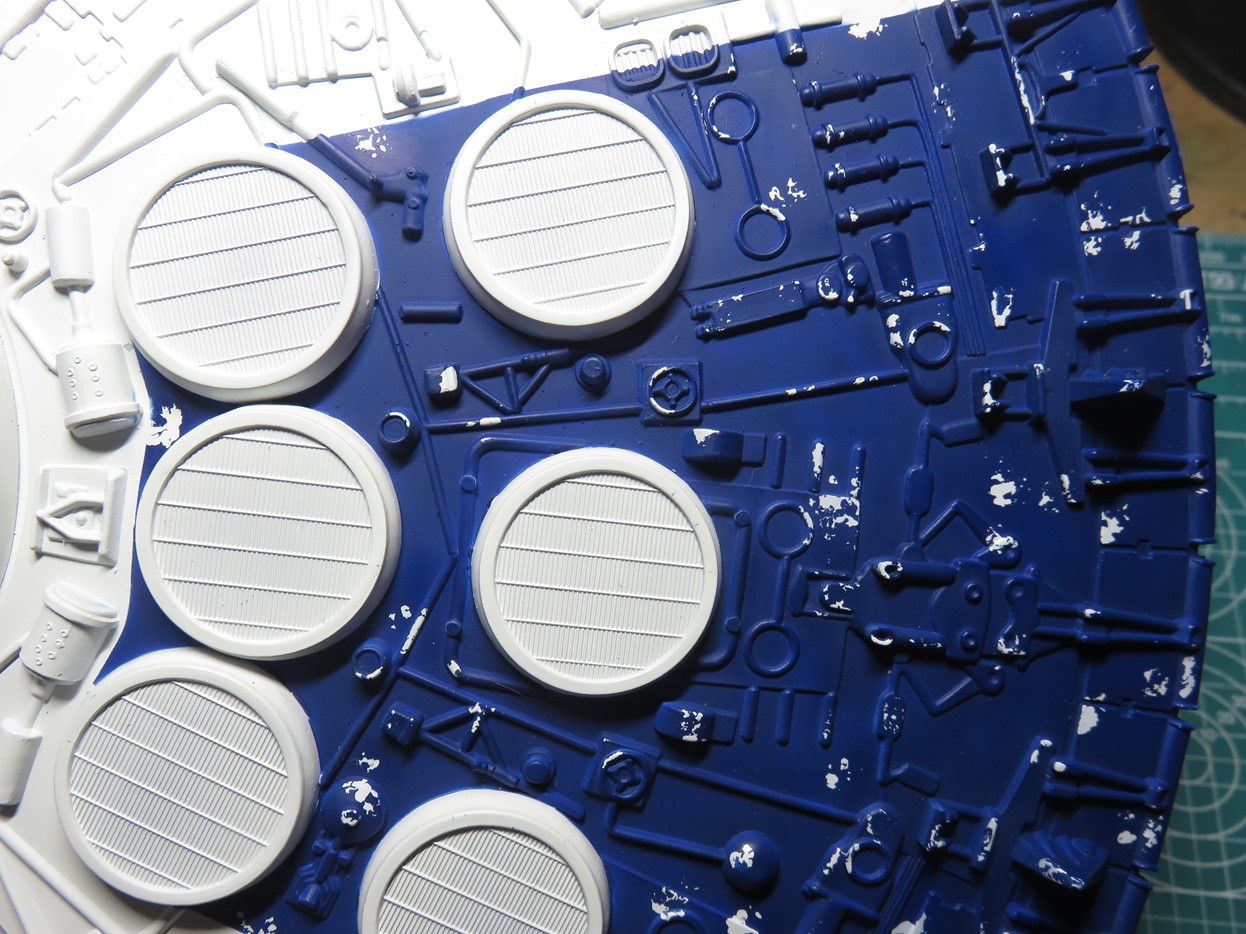
And here is the completed back section with the tape and Mr. Masking Sol NEO removed. I’m really happy with the results as I thought that this was going to be the most difficult masking… I would later be proven wrong about this. But this was a real challenge, and you will notice a few whiffs of blue that bled through onto the Insignia White.
I knew that this was going to happen at some stages in the build, but it’s nothing major and I will clean these areas up eventually.
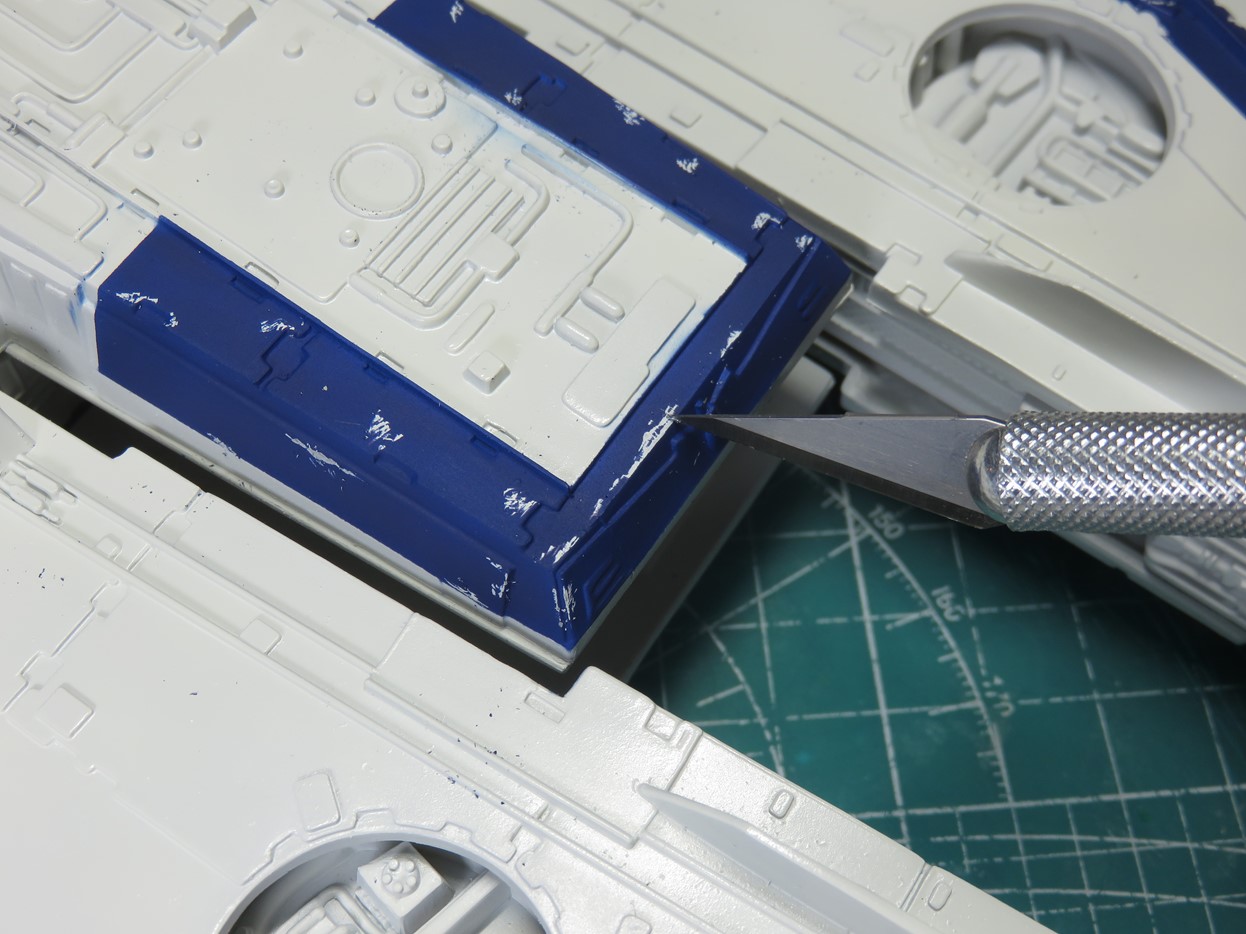
Moving along to the front section of the model I painted this blue section. Unfortunately, I forgot to add the Mr. Masking Sol NEO! But I can still add on some scratches.
Because I’m painting the blue on so thin it’s quite fragile. Also, because the underlying paint is a lacquer it’s a lot tougher than the acrylic XF-8 Flat Blue. Using my hobby knife I was able to carefully scrape away some of the paint revealing the Insignia White below.
Now you might be wondering, why don’t I just do this for the rest of the model instead of using Mr. Masking Sol NEO? Or, if I could just scrape away the paint what’s the point of using the Tamiya Chipping Liquid 87225?
Good questions, and using the Mr. Masking Sol NEO is a lot quicker than having to scrape away the paint. It’s a good process, but it’s quite slow. And scraping away the paint I still run the risk of scraping too much and damaging the Insignia White which might reveal the primer or go straight down to the plastic.
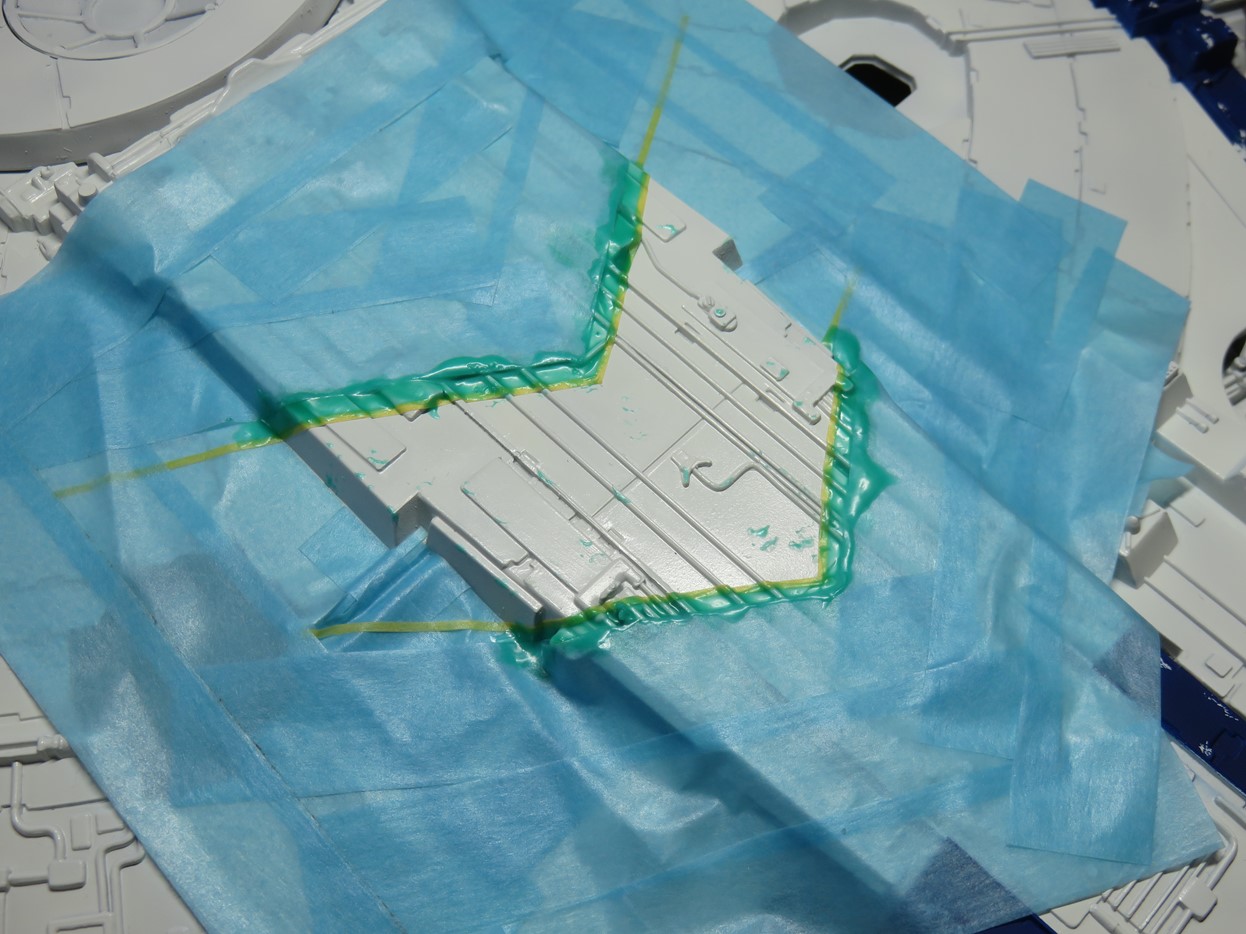
Next, I masked off the large chevron that’s in the front of the Envoy. Hasbro has this painted very narrow, and I preferred the larger version as was featured on the F-Toys Falcon. This was a real challenge to mask. With all of the piping that I had to mask over made it incredibly difficult to keep the tape aligned.
It took me a few tires to get the angles correct, and because of the pipes, it does look a bit wonky at times. But looking at it straight overhead it looks really great. And this time I remembered to add in Mr Masking Sol NEO for the chipping.
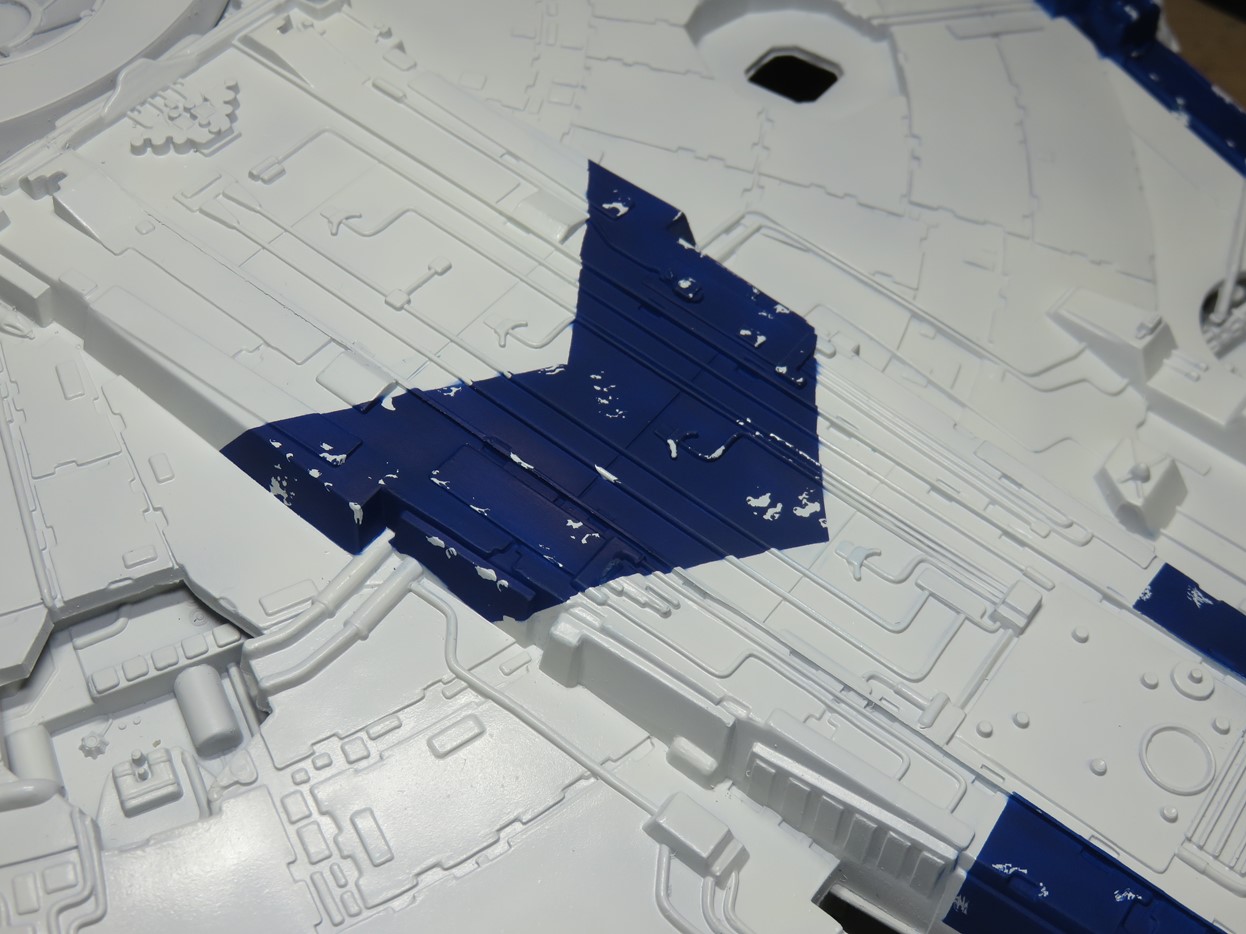
When I removed the masking I was really pleased that there wasn’t as much bleeding as I anticipated. There are a few areas in the blue that will need to be touched up, and for this I’ll just hand paint them on.
Alright, the toughest masking is now completed… (what a fool)
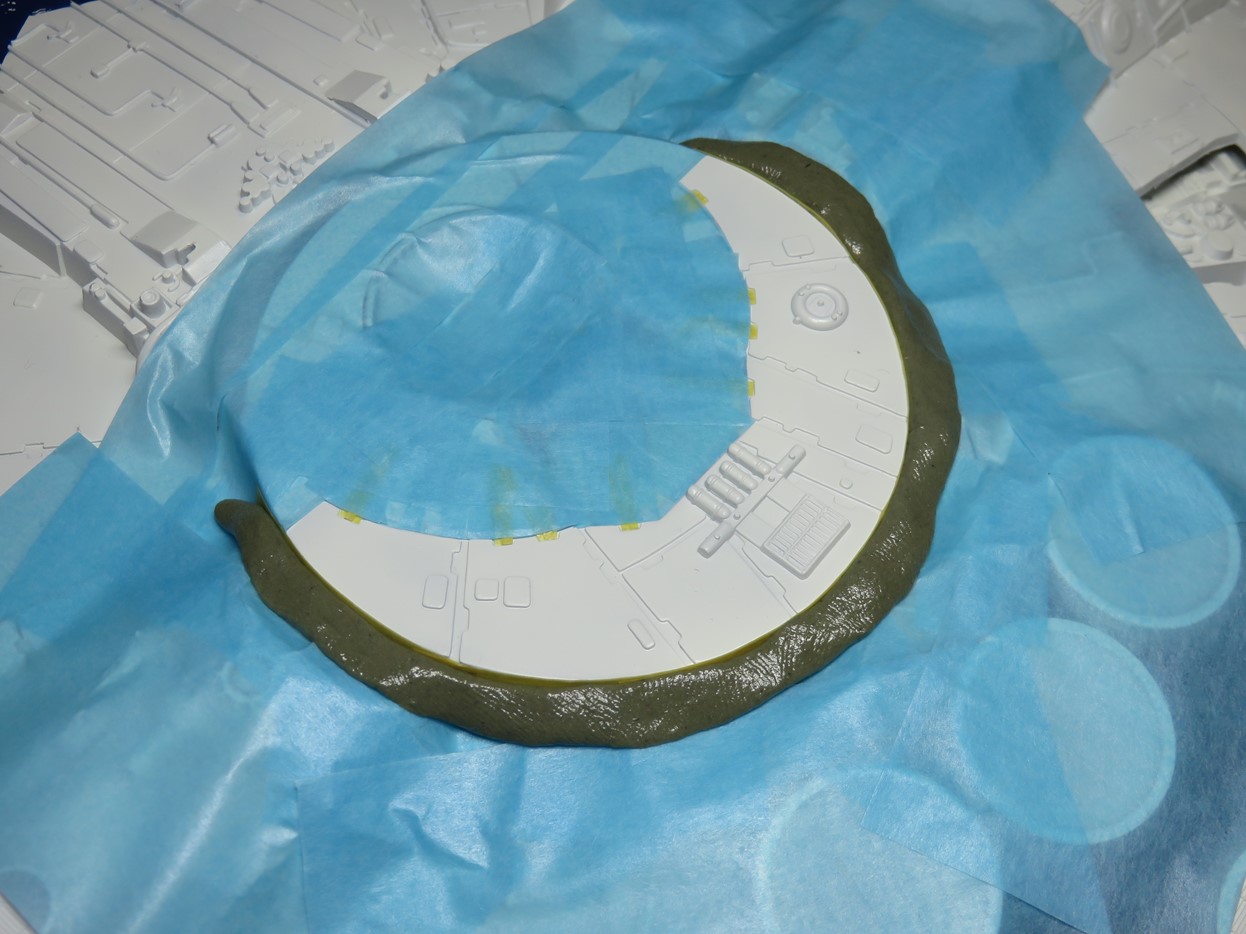
For the top half of the upper turret, I again used the Tamiya 1.0mm tape to fill in the small indents in the panel sections. However, to fill in the side where the turret meets with the hull, instead of filling this in with a lot of tape and hoping that it would all stay down I used some Silly Putty to fill in the gap.
Putty is fantastic for modeling and masking. I’ve seen modelers stuff it into landing gear bays (I’ve tried this once before and I could barely get it out without destroying the model) But it’s really great for creating curved camouflage. It’s also great for holding small parts when I’m airbrushing and here for filling in this big gap on the model.
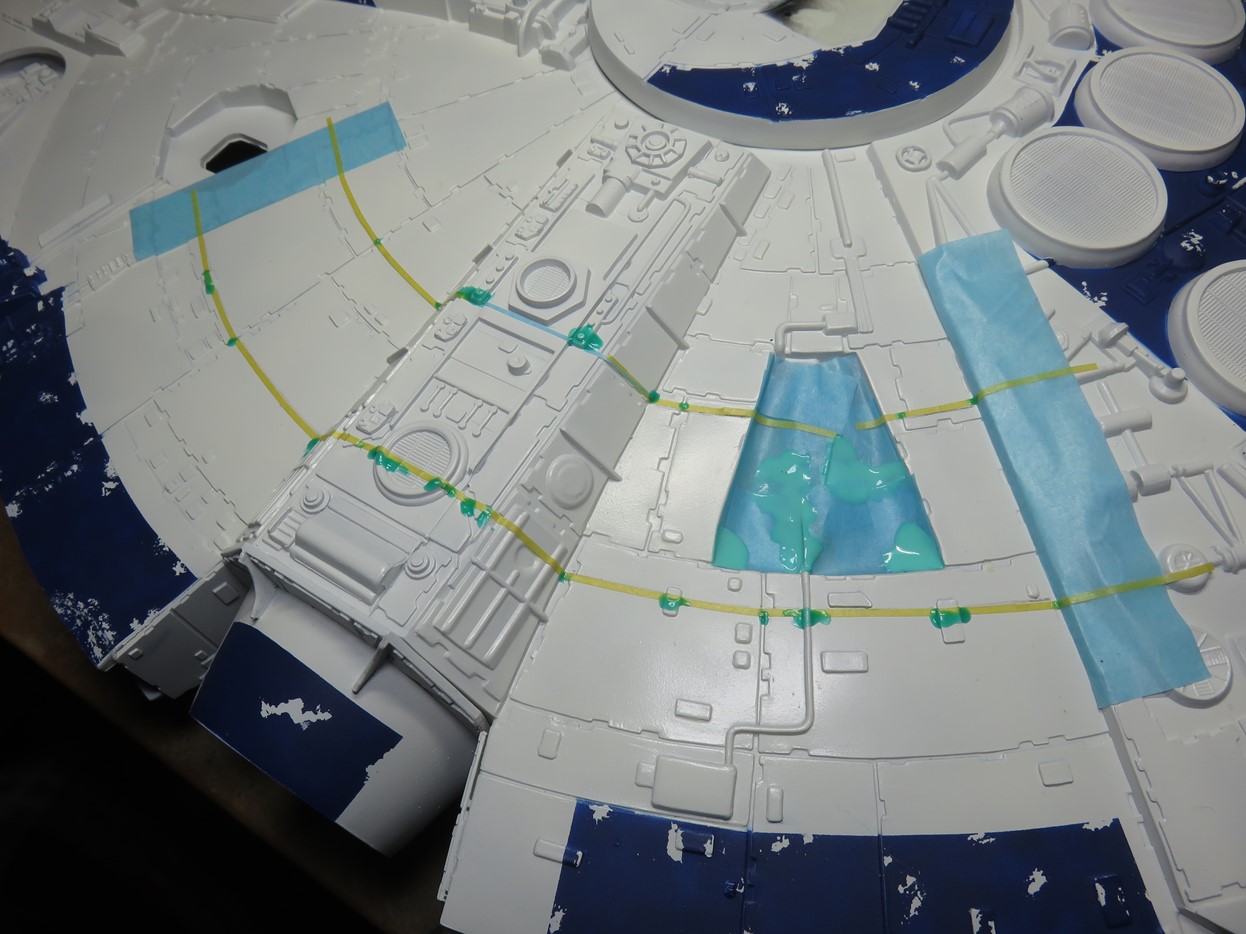
And now what would actually and really be the toughest part of masking the Stellar Envoy. Just as I showed in Part 6, I took my compass and followed along the side edge of the hull to pencil in the curved section.
However, I tried something a bit different this time. When I masked the chevron shape earlier all of the pipes and raised panels got in the way and would disrupt the angle I was trying to mask. This time, I placed the Tamiya tape down and when I got to the raised or lowered sections, I would carefully cut them with my hobby knife. This would break the tension in the tape trying to keep with the surface.
But this ultimately creates a small gap in the tape. As you can see from the picture, my solution was to fill it in with some Masking Sol NEO. This bit of extra effort would really pay off later on when I removed the tape.
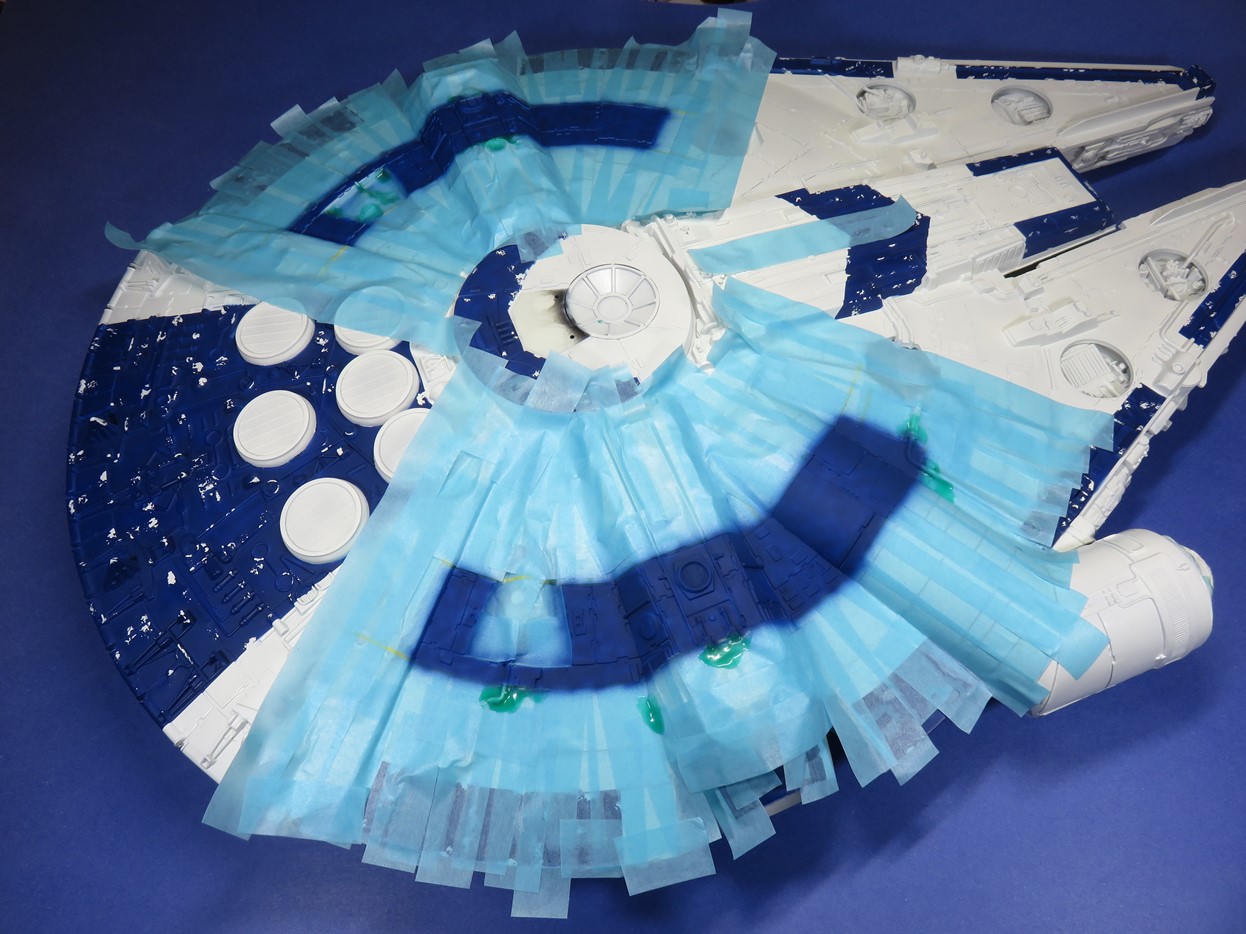
These crescent shapes were very time-consuming to mask and difficult for me to get the proper angles. Because of the odd angles I would be painting at I decided to use a lot more tape, just as a precaution for over-spray.
But this would be the last of the blue that I needed to paint, well, at least on the upper side. The underside is incredibly minimal compared to the top.
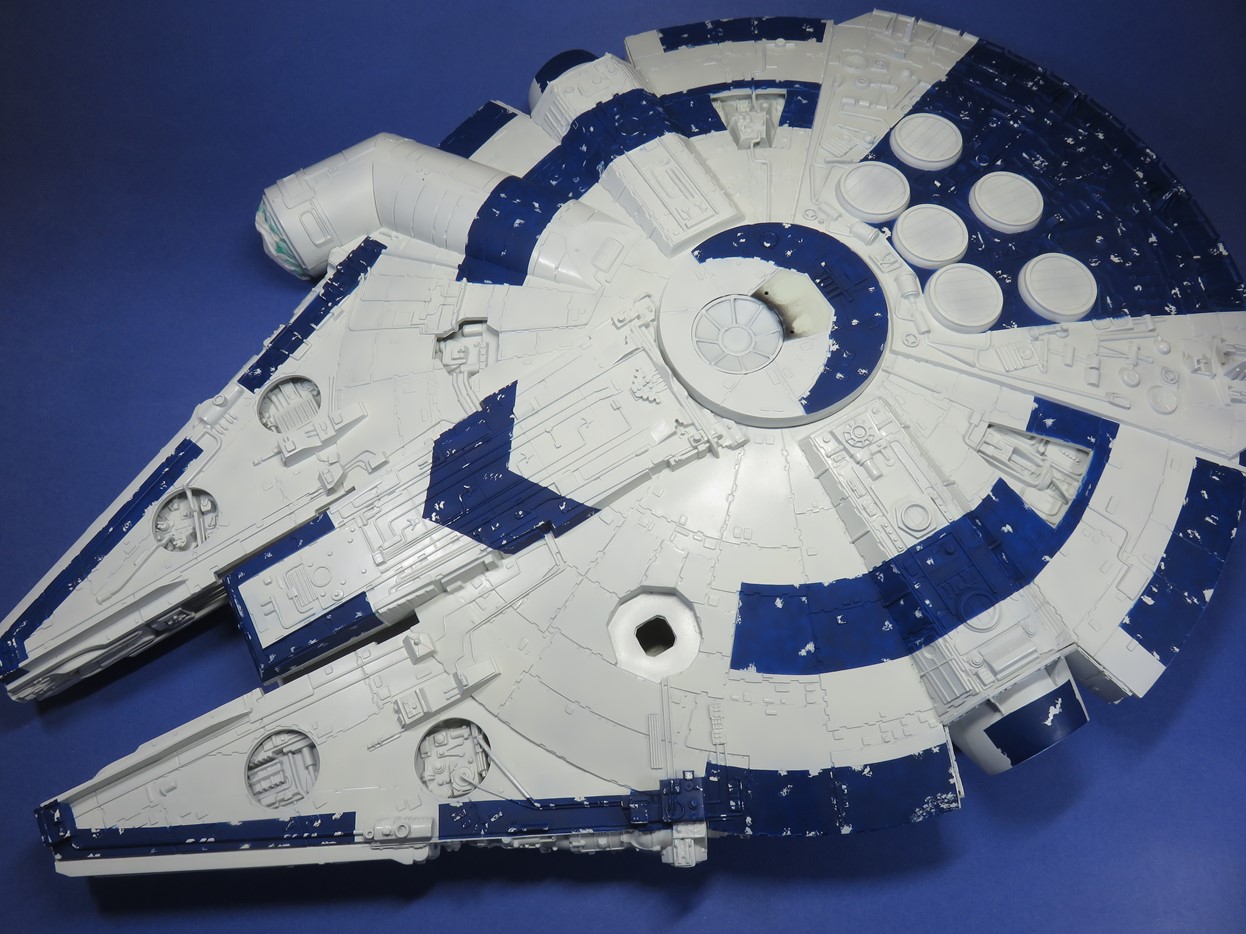
And this is the current state of the Stellar Envoy! Hard to believe when I first started painting that I’d get to this stage. I’m really pleased with all of the masking, but I’ve been told that the scratches look like stars, so I’m going to have to see if I can do anything about that, or maybe I’ll just leave them as they are.
I’m really pleased with how those crescents have turned out and that they are nice and even from each other.
In all honesty, I can officially say that I’m done with all of the complicated masking. But there is still more to do. In the next section, I’ll be adding a bit more color by painting in some of he panels and some more of the details. I’m also going to paint in the parts that were hit with overspray. As I mentioned, I knew that there would be some, and thankfully it won’t take me too long to clean it all up again.
To be continued…
Jared Demes is a modeler from southern Alberta. He has been building models since he was 4 years old when his Dad first introduced him to the hobby. He has written for several magazines including, Fine Scale Modeler, Scale Aircraft Modeling, Phoenix Scale Models, and others. He has an interest in all modeling subjects, with a focus on WWII Japanese aircraft and Science Fiction.
Jared has won several IPMS awards for his modeling, and currently operates his YouTube channel rebelsatcloudnine, where he showcases model builds and product demonstrations.
